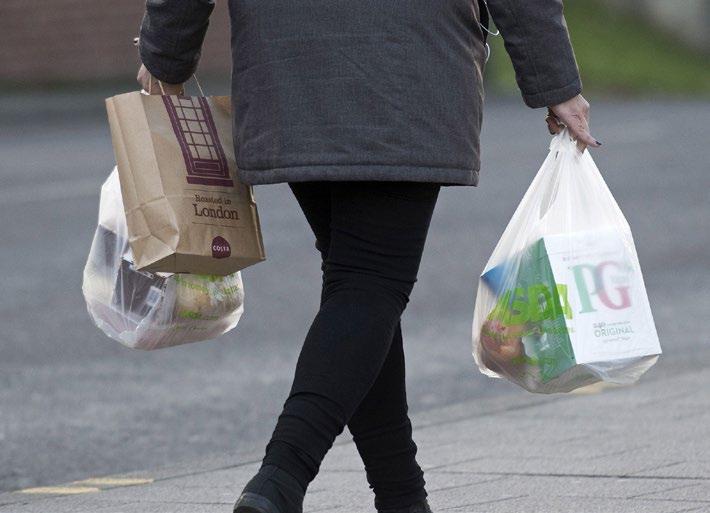
3 minute read
AMAZON
OPINION: GLOBAL VIEW
WHAT’S AMAZON UP TO NOW?
HARDLY A WEEK GOES BY WITHOUT AMAZON UNVEILING ANOTHER POTENTIALLY GAME-CHANGINGCONCEPT AND THIS WEEK IS NO DIFFERENT WITH THE OPENING OF ITS FIRST AMAZON FRESH STORE.
BY ANTONY BEGLEY
At one point in time, Amazon was really only a threat to the major retailers, who quickly became aware of its all too obvious encroachment into grocery.
There’s hardly a week goes by without a new concept or initiative being unfurled, usually with a minimum of fuss. One of the things that is so threatening about Amazon is its clear willingness to tackle big, complex and very expensive challenges, many of which are set to fail. Boss Jeff Bezos has said as much – but with the deepest pockets on the planet, Bezos is willing to risk as many enormous-scale failures as is required to unearth the gems that have grown the business into the behemoth it is today.
That apparently swashbuckling approach is something that very few companies are prepared to compete with and it’s something that causes massive consternation in boardrooms everywhere, including among fellow global giants like Microsoft and Apple.
The other key belief that sits at the heart of everything Amazon does is that the customer comes first. Every business says it, most businesses mean it, but Amazon delivers on it. Nothing matters more than the customer – and that includes the Amazon bottom line. That partially explains the company’s seemingly gung-ho approach to embracing multibillion dollar failures.
Being an entirely data-driven company, however, Amazon makes every decision based on numbers. Algorithms, if you like. And while many believe that the ‘computer says’ model necessarily results in a loss of human empathy and missed opportunity, it’s hard to argue that the model isn’t working.
The presentation by Jeff Bezos to investors during coronavirus was a perfect example of how the company approaches business. The Amazon CEO boldly warned investors earlier this year that the company was heading towards a possible loss in Q2 as he had decided to spend $4bn – all of the company’s expected second quarter operating profit. How many CEOs would get away with that plan? The company was then projecting a loss of $1.5bn for the quarter. Let that sink in.
But what happens? Despite the $4bn spend, Amazon later announced that it had instead doubled its net profit yearon-year to an astonishing $5.2bn. For the quarter. Yes, for three months. (The $4bn was spent on what Bezos called “incremental Covid-19 related costs in the quarter to help keep employees safe and deliver products to customers”. In other words, the profit would have been over $9bn for the quarter without those expenses.)
Big profits can then power more investment and recent weeks have seen plenty of new developments from Amazon, the latest its first ever Amazon Fresh grocery store. Thankfully, from a UK point of view, the store is in the affluent Los Angeles suburb of Woodland Hills, but it would surprise no-one to see the concept make its way to the UK at some point.
According to Amazon, the store is “designed from the ground up to offer a seamless grocery shopping experience, whether customers are shopping instore or online” and the company has “taken our decades of operations experience to deliver consistently low prices for all, and free same-day delivery for Prime members“.
Amazon Fresh features a wide assortment of national brands and highquality produce, meat, and seafood as well as a range of prepared foods made fresh in store every day. The store also features Amazon Dash Cart which lets customers skip the checkout line, and makes use of new Alexa features to help customers manage their shopping lists and better navigate the aisles.
The store offers same-day delivery and pickup direct from the store or customers can pick up their orders by visiting the service counter or by pulling up to a dedicated pick-up parking spot. Amazon Fresh also offers Amazon.com package pick-up and free package-less product returns.
Interestingly, the store is focused on delivering “consistently low prices for all”, in stark contrast to its Whole Foods Market cousin. Customers can also earn 5% back at Amazon Fresh when they use their Amazon Prime Rewards Visa Signature Card or Amazon Prime Store Card at checkout.
It looks, essentially, like a hybrid of a more value-focused Whole Foods Market and an Amazon Go store and sends an intimidating message to retailers of all sizes. And with massive profits swelling the coffers, Amazon’s rate of progress is only likely to accelerate.

AND WHILE WE’RE ON THE SUBJECT...
Here’s another of Amazon’s off-the-wall projects: a drone mothership to take delivery to a stratospheric level.










